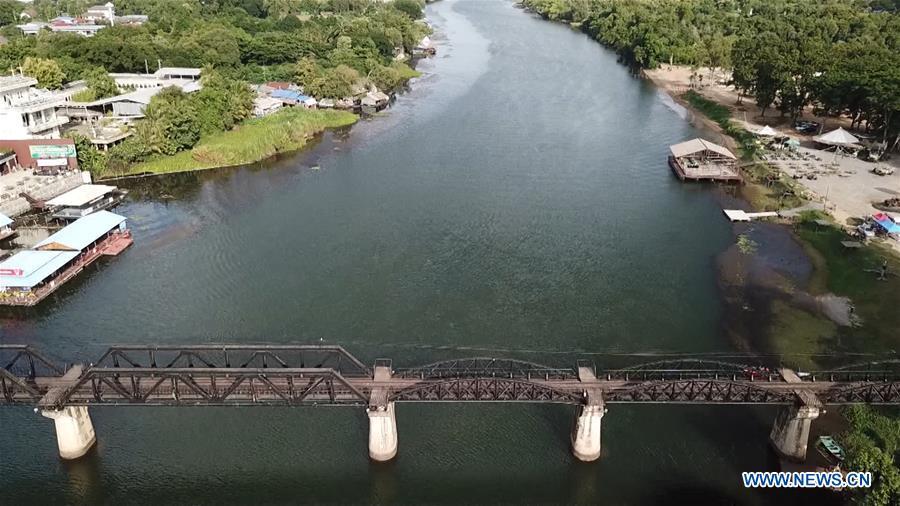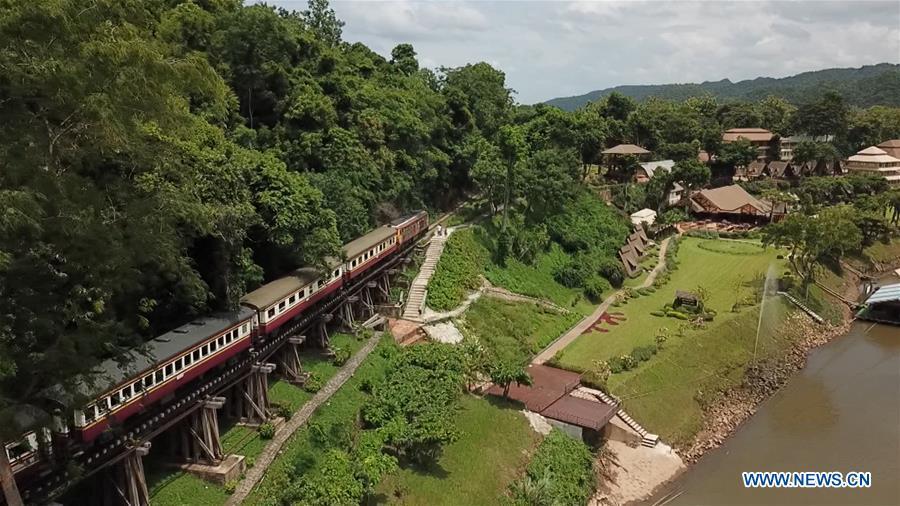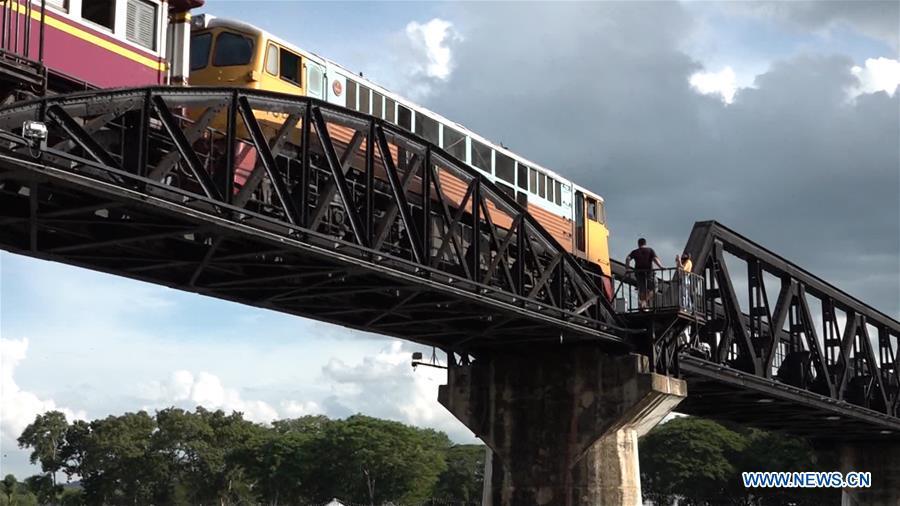Feature: Thailand-Burma Death Railway -- "We hope people never forget what happened here"
Xinhua
1599010926000

Photo taken on Aug. 19, 2020 shows the bridge over the River Kwai, the most notable part of the "Death Railway," in Kanchanaburi, Thailand. During World War II, the Japanese forced more than 60,000 allied prisoners of war and nearly 300,000 Southeast Asian laborers to build a 415km railway across the mountains and jungles between Thailand and Myanmar (then Burma). Tens of thousands died during the construction and it became known as the "Death Railway." (Photo by Thana/Xinhua)

Photo taken on Aug. 19, 2020 shows the Kanchanaburi War Cemetery, where around 7,000 prisoners of war were buried, in Kanchanaburi, Thailand. During World War II, the Japanese forced more than 60,000 allied prisoners of war and nearly 300,000 Southeast Asian laborers to build a 415km railway across the mountains and jungles between Thailand and Myanmar (then Burma). Tens of thousands died during the construction and it became known as the "Death Railway." (Photo by Ren Qian/Xinhua)

Photo taken on Aug. 19, 2020 shows the bridge over the River Kwai, the most notable part of the "Death Railway," in Kanchanaburi, Thailand. During World War II, the Japanese forced more than 60,000 allied prisoners of war and nearly 300,000 Southeast Asian laborers to build a 415km railway across the mountains and jungles between Thailand and Myanmar (then Burma). Tens of thousands died during the construction and it became known as the "Death Railway." (Photo by Thana/Xinhua)

Photo taken on Aug. 18, 2020 shows the bridge over the River Kwai, the most notable part of the "Death Railway," in Kanchanaburi, Thailand. During World War II, the Japanese forced more than 60,000 allied prisoners of war and nearly 300,000 Southeast Asian laborers to build a 415km railway across the mountains and jungles between Thailand and Myanmar (then Burma). Tens of thousands died during the construction and it became known as the "Death Railway." (Photo by Thana/Xinhua)


